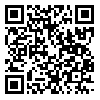BibTeX | RIS | EndNote | Medlars | ProCite | Reference Manager | RefWorks
Send citation to:
URL: http://bloodjournal.ir/article-1-1571-en.html
A B S T R A C T
Background and Objectives
Blood transfusion is one of the fundamental pillars of modern medicine. Ensuring a safe blood supply is a primary responsibility of Blood Transfusion Centers. In recent years, the demand for blood has increased significantly, particularly in countries with an aging population. Given the increasing trend of population aging in Iran, understanding demographic patterns related to blood donation can play a crucial role in developing educational and incentive programs to enhance public participation. This study compares the gender and age group characteristics of blood donation across three provinces of the country.
Materials and Methods
This ecological cross-sectional descriptive study utilized aggregated data from the national Blood Transfusion database for the year 2022. Three provinces were selected to represent high, medium, and low blood donation Units. Gender and age group distributions in blood donations across these provinces were analyzed using the chi-square statistical method, and in cases of significant results, a standardized residual post hoc test was applied. All statistical analyses were conducted using STATA software, version 17.
Results
In 2022, a total of 2,223,492 units of blood were donated. The provinces of Ilam with 18,201 (0.8%), Yazd with 43,359 (2%), and Tehran with 695,233 (16.6%) units of blood donation were studied. In Ilam, women had the highest proportion with 6.57% compared to Yazd with 2.97% and Tehran with 3.82, (p< 0.0001). The highest frequency of the age group 26-35 years was observed in Ilam with 10.99% compared to Yazd with 9.56% and Tehran with 9.60%, (p<0.0001). In contrast, the age group 51-55 years showed the highest proportion in Tehran with 10.27% compared to Yazd with 9.37% and Ilam with 9.05%, (p<0.0001).
Conclusions
Significant differences in the gender and age group characteristics of blood donors were observed across the three provinces of Ilam, Yazd, and Tehran. While Ilam had the lowest and Tehran the highest number of blood donations, the proportion of women and young donors in Ilam was higher than in the other two provinces. Greater attention to these differences can help relevant policymakers adopt more effective strategies to increase donor recruitment in each province.
Key words: Blood Donation, Donors, IranA B S T R A C T
Background and Objectives
Blood transfusion is one of the fundamental pillars of modern medicine. Ensuring a safe blood supply is a primary responsibility of Blood Transfusion Centers. In recent years, the demand for blood has increased significantly, particularly in countries with an aging population. Given the increasing trend of population aging in Iran, understanding demographic patterns related to blood donation can play a crucial role in developing educational and incentive programs to enhance public participation. This study compares the gender and age group characteristics of blood donation across three provinces of the country.
Materials and Methods
This ecological cross-sectional descriptive study utilized aggregated data from the national Blood Transfusion database for the year 2022. Three provinces were selected to represent high, medium, and low blood donation Units. Gender and age group distributions in blood donations across these provinces were analyzed using the chi-square statistical method, and in cases of significant results, a standardized residual post hoc test was applied. All statistical analyses were conducted using STATA software, version 17.
Results
In 2022, a total of 2,223,492 units of blood were donated. The provinces of Ilam with 18,201 (0.8%), Yazd with 43,359 (2%), and Tehran with 695,233 (16.6%) units of blood donation were studied. In Ilam, women had the highest proportion with 6.57% compared to Yazd with 2.97% and Tehran with 3.82, (p< 0.0001). The highest frequency of the age group 26-35 years was observed in Ilam with 10.99% compared to Yazd with 9.56% and Tehran with 9.60%, (p<0.0001). In contrast, the age group 51-55 years showed the highest proportion in Tehran with 10.27% compared to Yazd with 9.37% and Ilam with 9.05%, (p<0.0001).
Conclusions
Significant differences in the gender and age group characteristics of blood donors were observed across the three provinces of Ilam, Yazd, and Tehran. While Ilam had the lowest and Tehran the highest number of blood donations, the proportion of women and young donors in Ilam was higher than in the other two provinces. Greater attention to these differences can help relevant policymakers adopt more effective strategies to increase donor recruitment in each province.
| Rights and permissions | |
 |
This work is licensed under a Creative Commons Attribution-NonCommercial 4.0 International License. |







